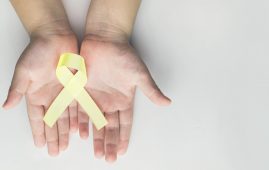

Researchers discovered a previously unknown class of antibodies—immune system proteins that fight against disease—that appear to be capable of neutralizing numerous strains of flu virus. Holly Simmons of the University of Pittsburgh School of Medicine and colleagues published their findings in the open-access journal PLOS Biology, which could help to build more broadly protective flu vaccinations.
A flu vaccine stimulates the immune system to produce antibodies that attach to hemagglutinin, a viral protein found on the exterior of an invading flu virus, preventing it from entering a person’s cells. Different antibodies bind differently to different sections of hemagglutinin, and hemagglutinin itself develops with time, resulting in the creation of new flu strains that can avoid old antibodies. Every year, new flu vaccines are introduced based on projections of which strains will be the most prevalent.
Extensive research is opening the path for the creation of flu vaccinations that can protect against numerous strains at once. Many researchers are working on antibodies that can guard against both H1 and H3 flu subtypes, which appear in multiple strains and cause widespread sickness.
Simmons and colleagues focused on a specific challenge in this endeavor: a tiny alteration in the sequence of building blocks that makes up hemagglutinin found in some H1 strains. Certain antibodies that can neutralize H3 can also neutralize H1, but only if their hemagglutinin has the 133a insertion.
In a series of studies using patient blood samples, the researchers discovered a new class of antibodies capable of neutralizing both certain H3 strains and certain H1 strains with and without the 133a insertion. These antibodies are distinguished by their molecular properties from other antibodies capable of cross-neutralizing H1 and H3 strains in other ways.
This study adds to the list of antibodies that could potentially help to the creation of a flu vaccine that provides greater protection via a variety of molecular mechanisms. It also adds to the growing body of research advocating a shift away from flu vaccines generated on chicken eggs, which is presently the most frequent manufacturing method.
The authors add, “We need annual influenza virus vaccines to keep pace with continuing viral evolution. Our work suggests that the barriers to eliciting more broadly protective immunity may be surprisingly low. Given the right series of influenza virus exposures/vaccinations, humans can mount robust antibody responses that neutralize divergent H1N1 and H3N2 viruses, opening new avenues to design improved vaccines.”
For more information: Simmons HC, Watanabe A, Oguin III TH, Van Itallie ES, Wiehe KJ, Sempowski GD, et al. (2023) A new class of antibodies that overcomes a steric barrier to cross-group neutralization of influenza viruses. PLoS Biology (2023).
more recommended stories
 36-Week Pre-eclampsia Screening May Reduce Term Risk
36-Week Pre-eclampsia Screening May Reduce Term RiskA New Preventive Strategy for Term.
 Cardiovascular Risk and Sudden Cardiac Death in Diabetes
Cardiovascular Risk and Sudden Cardiac Death in DiabetesRising Sudden Cardiac Death (SCD) Risk.
 Poor Kidney Function and Alzheimer’s Biomarkers Explained
Poor Kidney Function and Alzheimer’s Biomarkers ExplainedPoor kidney function may influence levels.
 Walking Speed Before Hip Replacement Predicts Recovery
Walking Speed Before Hip Replacement Predicts RecoveryNew Evidence Points to a Simple,.
 Neuroblastoma Drug Combo Extends Survival in Models
Neuroblastoma Drug Combo Extends Survival in ModelsA Promising Shift in High-Risk Neuroblastoma.
 How Soybean Oil Impacts Weight Gain and Metabolism
How Soybean Oil Impacts Weight Gain and MetabolismWhy Soybean Oil May Affect Metabolism.
 Coffee and Cognitive Function: Evidence Review
Coffee and Cognitive Function: Evidence ReviewA new narrative review in Cureus.
 Colorectal Cancer Screening Rates Low in Adults 45–49
Colorectal Cancer Screening Rates Low in Adults 45–49Recent UCLA research reveals that colorectal.
 Gut Immune Cells and Long-Lasting Antiviral Protection.
Gut Immune Cells and Long-Lasting Antiviral Protection.Breakthrough Findings on How Gut Immune.
 Mild Pancreatic Duct Dilatation Signals Higher Cancer Risk
Mild Pancreatic Duct Dilatation Signals Higher Cancer RiskEarly Structural Changes Offer Critical Clues.

Leave a Comment